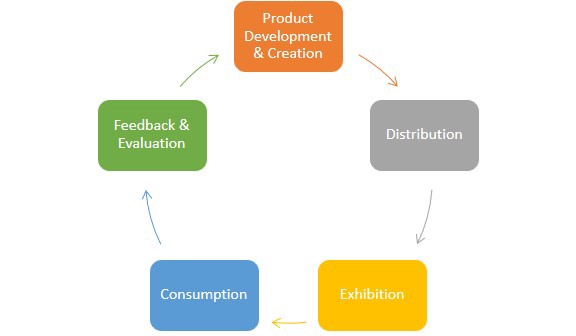The discussion paper centres the idea that COVID-19 has provided a ‘clear imperative: future disruptions are inevitable, and the arts and culture industries must rapidly adjust to ensure they don’t just survive but thrive in the future.’
I was immediately curious — what would the collective arts and culture industries’ artists, artsworkers and organisations consider in the consultation to follow? Reading the paper from my perspective, as a non-Indigenous woman and Queenslander with a long history working in the Australian music industry — I have first hand experience of cultural industry disruption and have learned to adapt and embrace innovation and technology since the 1990s.
This paragraph leapt from the first page:
‘By providing multiple access points and opportunities for engagement — digital, in person, local, national and international, regional and remote — we can ensure that all Australians can equally participate in the arts and cultural life of the nation.’
Government agencies have propelled themselves at speed toward funding the creation of digital content, especially in the performing arts. A tsunami of grant funded digital content from artists, organisations and venues tricked out to record live peformances is brewing. Yet, all the cameras, editing and performance pirouettes in the world will fail without effective distribution.
Digital Distribution
The Media Provision Cycle of product/content development — distribution — exhibition — consumption — feedback/evaluation is generally applied to the media industries. The model is adaptive and useful for considering the opportunities for online arts and cultural content engagement.

Media Provision Cycle
When this model is applied to arts and cultural product creation and engagement in the digital space — ‘distribution’ becomes the technology platforms’ infrastructures that enables the ‘exhibition’ of the performance to an audience online.
If the Australia Council and the arts and culture industries want to increase the understanding of the contributions of arts and culture to daily life and the Australian economy — engagement and convergence with digital platforms will be crucial.
The plethora of Australian arts and cultural digital ‘product’ will be distributed and churned through the global digital platforms Facebook, Instagram, Google, Youtube, Spotify, Apple, TikTok, Twitch and any newcomers that can reach, and monetize, audiences of scale. It is the digital platforms that provide the technology infrastructure for any new model looking to monetize content online. There are opportunities, and very real risks, presented by these platforms. It is the distribution platforms that become custodians of the small data that feeds big data over time. Big data is ‘fed’ by content, marketing and mining of ‘small’ data over time.
‘By reacting to small data circulations artist managers and other types of gatekeepers are feeding the big data economy.’ (Morrow, Guy. “Artist Management in the Age of Big Data.” The Routledge Companion to Arts Management, p 75)
The content distribution models of major global tech companies are a vital part of any ‘What’s Next?’ consultation — both for the stated goal of economic sustainability but also within the global context which arts and culture are produced, distributed and circulated.
Consultations with stakeholders of ‘arts and culture industries’ need to include in their scope representatives of both global and Australian innovation, technology and digital platforms.
It is at this site of convergence of arts and culture with distrubution technology that the ‘opportunity’ the sector is seeking exists.
Digital Convergence
The Australia Council Discussion Paper also highlights what a catalyst the pandemic has been to force a ‘need to explore and develop new models for future financial sustainability.’ It goes further to ask the question: ‘what digital models can the arts and cultural industries develop for making arts experiences accessible and innovate and supporting arts businesses to be viable?’
The word ‘develop’ here is curious — there is no need to reinvent the wheel when the dominant and emerging digital distribution platform technologies exist. Strategic convergence with existing technology and data infrastructure could be the next logical step for the arts and culture industries to consult with, invite to engage, collaborate and partner.
The comparative media studies scholar Henry Jenkins is a key theorist in ideas of a ‘cultural logic for media convergence’. Writing in the early 2000s his work could now encourage those leading the Australian arts and culture industries, particularly the performing arts, to actively seek and embrace convergence with digital technologies and innovation.
“Convergence is both a top-down corporate-driven process and a bottom-up consumer-driven process.” (Jenkins, 37)
Jenkins’s 2004 paper identified the major sites of tension at the convergence of technology and content as applied to the media industries. The insights are relevant and transferable to the transformation required of arts and cultural production in the 2020s.
Convergence of the arts and culture industries with digital platform technologies requires more than a business-as-usual partnership or a tick-a-box marketing activity — it will require ongoing engagement and collaboration to reconfigure and reshape cultural aesthetics AND economics.
Transitioning to reflexive models of digital distribution for the arts and culture industries will require the sharing of not only content, but the resources and means of production and reproduction — this will challenge the incumbent systems of distribution, ownership and copyright.
My own experience of contemporary music has been working with individuals and companies willing to embrace, and not resist, the major distribution disruption digital technologies have caused for over twenty years. Resilient artists, managers and companies looked ‘sideways’ to seek relationships and new ways of working with technology partners.
If the arts and culture industries embraced an inclusive approach with innovation and technology industries a ‘collective intelligence’ could be tapped to solve big, urgent problems.
If the arts and culture industries remain fixed in their silo, it will continue to be the global technology companies who accelerate the distribution of the plethora of digital arts and cultural content coming down the product development pipeline. It will be the digital platforms that adapt to expand delivery channels, broaden markets, reach audience and own the data generated.
WORKS CITED
Jenkins, Henry. “The Cultural Logic of Media Convergence.” International Journal of Cultural Studies, vol. 7, no. 1, 2004, pp. 33–43, doi:10.1177/1367877904040603.
Morrow, Guy. “Artist Management in the Age of Big Data.” The Routledge Companion to Arts Management, edited by William J Byrnes and Aleksandar Brkić . Routledge, 2019, pp. 66–82, doi: 10.4324/9781351030861
This article was originally published on Medium as What Next? The Convergence of Arts, Culture and Distribution Technology.





